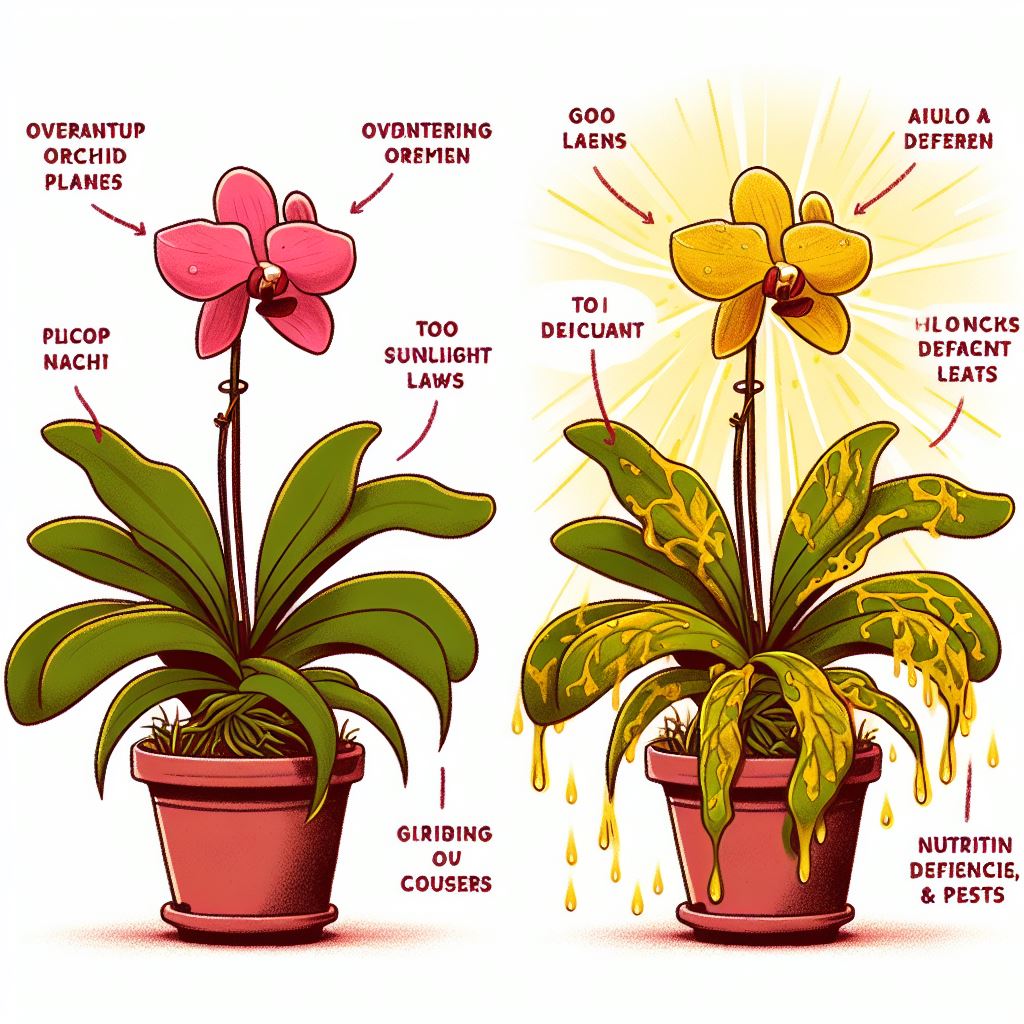
Orchids are renowned for their stunning blooms and delicate foliage, but when those once vibrant green leaves start to turn yellow, it can be concerning for any orchid enthusiast. Understanding why this happens and how to address it is crucial for maintaining the health and beauty of your orchid plants.
Introduction
Orchid leaves play a vital role in the overall health and growth of the plant. They are responsible for photosynthesis, essential for producing energy and sustaining the orchid. Therefore, any signs of discoloration or yellowing should be addressed promptly to ensure the plant’s well-being.
Signs of Yellowing Leaves
Identifying yellowing leaves is the first step in addressing the issue. While it’s natural for orchid leaves to gradually turn yellow and fall off as part of the plant’s growth cycle, sudden or extensive yellowing may indicate an underlying problem. Pay attention to the following signs:
- Uniform Yellowing: If all the leaves on your orchid turn yellow simultaneously, it could be a sign of stress or environmental shock.
- Spots or Blemishes: Yellow leaves with spots or blemishes may indicate a fungal or bacterial infection.
- Yellowing Tips: Yellowing starting from the tips of the leaves could be a sign of nutrient deficiency or improper watering.
Common Causes of Yellow Orchid Leaves
Several factors can contribute to the yellowing of orchid leaves. Understanding these causes is essential for effectively addressing the issue:
Overwatering
Overwatering is one of the most common mistakes made by orchid enthusiasts. Orchids are epiphytes, meaning they naturally grow on trees rather than in soil. Therefore, they have adapted to thrive in environments with excellent drainage. When orchids are overwatered, their roots can become waterlogged, leading to rot and yellowing leaves.
Underwatering
On the flip side, underwater can also cause orchid leaves to turn yellow. Orchids need regular but moderate watering to thrive. When they don’t receive enough water, their leaves may wilt and turn yellow as a sign of dehydration.
Excessive Sunlight
While orchids require bright, indirect light to thrive, too much direct sunlight can damage their leaves. Excessive sunlight can cause sunburn, leaving yellow or brown spots on the leaves.
Lack of Nutrients
Orchids require specific nutrients to support their growth and development. A lack of essential nutrients, such as nitrogen, phosphorus, or potassium, can cause the leaves to turn yellow and stunt the plant’s overall growth.
Pests and Diseases
Pests, such as aphids, spider mites, or mealybugs, can infest orchid plants and damage their leaves. Similarly, fungal or bacterial infections can also cause yellowing and discoloration.
How to Fix Yellow Orchid Leaves ?
Addressing yellowing leaves requires identifying the underlying cause and taking appropriate action:
Adjusting Watering Frequency
If overwatering or underwatering is the issue, adjust your watering frequency accordingly. Allow the orchid’s growing medium to dry out slightly between waterings, and always water at the base of the plant to avoid getting water on the leaves.
Providing Proper Light Conditions
Ensure that your orchid receives the right amount of light. Please place it in a location with bright, indirect sunlight and protect it from direct afternoon sun, which can scorch the leaves.
Fertilizing Appropriately
Fertilize your orchid regularly with a balanced orchid fertilizer to provide essential nutrients. Follow the manufacturer’s instructions for dilution and application to avoid overfertilizing, which can harm the plant.
Treating Pests and Diseases
If pests or diseases are present, treat them promptly to prevent further damage to the plant. Use organic or chemical treatments as appropriate, and ensure thorough coverage of the affected areas.
Preventive Measures
Taking proactive steps to prevent yellowing leaves can help maintain the health and vitality of your orchid plants:
- Establish a Regular Care Routine: Develop a consistent watering, fertilizing, and maintenance schedule to ensure your orchids receive the necessary care.
- Monitor Environmental Conditions: Monitor temperature, humidity, and light levels to ensure they are within the optimal range for orchid growth.
Conclusion
When orchid leaves begin to yellow, it’s a sign that demands attention. Identifying the usual reasons for this change and taking the proper steps can ensure your orchids flourish. It’s essential to be vigilant for any stress indicators, offer the necessary nurturing, and swiftly tackle any problems to preserve the lushness and vitality of your orchid’s leaves.
FAQs
Why are my orchid leaves turning yellow?
Orchid leaves may turn yellow due to various factors such as overwatering, underwatering, excessive sunlight, nutrient deficiencies, or pest infestations.
How can I prevent yellowing leaves in my orchid plants?
To prevent yellowing leaves, establish a regular care routine, monitor environmental conditions, and address any issues promptly, such as overwatering, nutrient deficiencies, or pest infestations.
Is it normal for orchid leaves to turn yellow?
While it’s natural for orchid leaves to turn yellow and fall off as part of the plant’s growth cycle, sudden or extensive yellowing may indicate an underlying problem that needs to be addressed.
Can yellow orchid leaves be saved?
Yellow orchid leaves can be saved by addressing the underlying cause, such as adjusting watering habits, providing proper light conditions, fertilizing appropriately, or treating pests and diseases.
When should I seek professional help for my orchid plants?
If you’ve tried addressing the issue of yellowing leaves without success or if your orchid shows signs of severe distress, such as wilting or extensive leaf damage, it may be time to seek professional help from a knowledgeable orchid grower or horticulturist.


